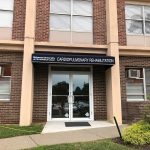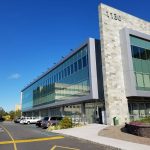Split-Night Polysomnography at the Sleep Disorders Institute
In order to properly diagnose and treat certain sleep disorders, such as sleep apnea, your doctor may recommend split-night polysomnography. This is a type of sleep study in which two night’s worth of recordings are combined into a single overnight observation.
The first phase of the study is the diagnostic portion of testing, and is similar to routine polysomnography, which measures any or all of the following indicators while you’re asleep:
- EOG, EEG, EMG and EKG activity
- Nasal/oral airflow
- Abdominal respiratory effort
- Snoring sounds
- Oxygen saturation
In addition to the electrodes collecting data, a videotape and audiotape will also be used to monitor your sleep patterns and body positions. If anything unusual or significant is detected, your doctor can use that information to form, or rule out, a diagnosis.
The second phase of the study involves application of positive airway pressure to determine if it is an appropriate treatment for you, and it resembles nocturnal polysomnography with nasal CPAP titration. This is when the technician will apply a CPAP mask. This portion of the study allows doctors to figure out the best treatment to prescribe for your specific sleep disorder.
Preparing for Your Split-Night Polysomnography
As your appointment approaches, pack a small bag with everything you might need for an overnight stay. This includes comfortable pajamas and any prescription medication you require. Discuss any medications you’re taking with your doctor beforehand, though. You’ll also need to refer back to any specific instructions given to you about eating, drinking alcohol or consuming caffeine beforehand.
After you arrive, the technicians will start preparing you for the study. They’ll attach a series of painless electrode devices to your scalp, face, chest and lower legs. These sensors will be used to monitor your airflow, heart rate and rhythm, chest movement, abdominal movement, oxygen levels, brain waves and other important data sets.
In the morning, you’ll be asked to wash your hair, so the sensor paste can be removed from your hair and skin. Soap, shampoo, towels, a blow dryer, bed linens and pillows will all be provided.
The Results (Polysomnogram)
After the split-night sleep study is over, the data will be sent off for analysis. Once the data have been analyzed, your doctor will be able to more effectively diagnose, treat and manage your sleep disorder.
For more questions about split-night polysomnographies, contact your doctor or the specialists at the Sleep Disorders Institute at the Richmond University Medical Center.



